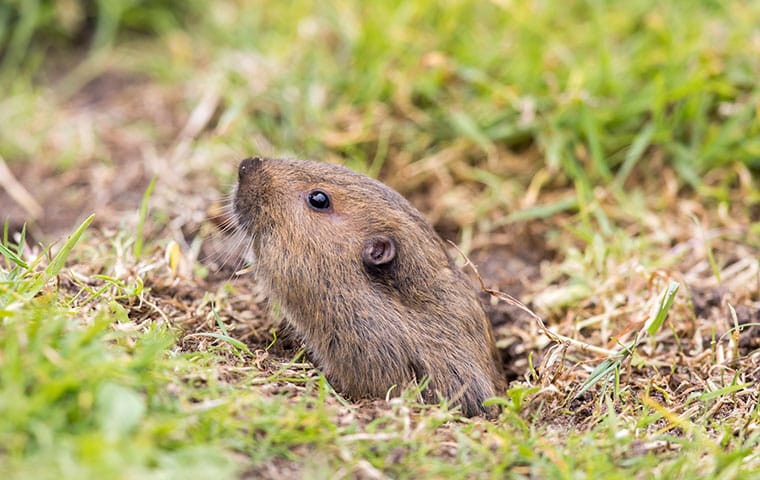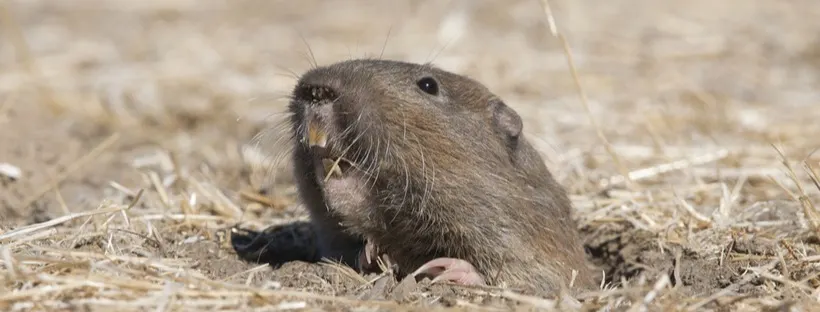Ultimate Parasite Control Solutions for Tackling Persistent Gopher Problem Issues
In the world of insect control, gophers present an one-of-a-kind challenge due to their relentless nature and harmful habits. By exploring a comprehensive method that incorporates understanding gopher behavior, employing specialized capturing methods, using repellents, and adopting long-lasting avoidance tactics, a path towards reliable gopher administration emerges.
Comprehending Gopher Behavior Patterns
Evaluating gopher behavior patterns supplies important understandings into their routines and preferences, aiding in the development of efficient parasite control strategies. Comprehending how gophers behave is critical in developing successful parasite administration plans.
Gophers are delving rats known for their considerable tunneling activities. gopher pest control. By observing their behavior, researchers have found that gophers are territorial creatures, with each gopher generally occupying its very own passage system. These passage systems serve numerous purposes, consisting of nesting, food storage space, and defense from killers
Additionally, gophers show particular feeding patterns, preferring origins, tubers, and various other underground plant components. By understanding their dietary choices, bug control specialists can tactically lure catches or execute repellents that target these food sources, efficiently reducing gopher populaces.
Furthermore, gophers are most active during specific times of the day, normally morning and late mid-day. This understanding can assist in organizing insect control activities for maximum effectiveness. On the whole, a thorough understanding of gopher actions patterns is essential for applying targeted and efficient insect control steps.
Effective Entraping Techniques
When dealing with gophers, traps are a humane and efficient technique for control. One of the most typically used catches is the box trap, which captures gophers to life so they can be launched elsewhere. It's vital to inspect catches regularly to ensure trapped gophers do not endure and to remove caught gophers quickly.
Using Repellents and Deterrents
To complement the effectiveness of capturing strategies in taking care of gopher problems, residential property proprietors can explore the utilization of repellents and deterrents as additional devices in their bug control toolbox. Repellents work by releasing smells or tastes that gophers find unpleasant, driving them far from dealt with locations. Typical repellents consist of castor oil-based items, predator pee, and garlic-based sprays. These repellents develop a barrier that inhibits gophers from going into gardens or excavating up grass. Deterrents, on the other hand, aim to make the environment less eye-catching to gophers by making use of resonances or sound to simulate killers or produce disturbances that make the area unwelcoming for gophers. Solar-powered gadgets that emit sonic pulses or vibrating risks can assist discourage gophers from settling in certain locations. When incorporating repellents and deterrents right into a pest control method, it is crucial to follow application directions very carefully and on a regular basis reapply the products to maintain their performance blog here in preventing gophers from triggering damages to buildings.
Implementing Natural Control Techniques

Gopher catches can be placed purposefully in energetic tunnels to record and get rid of the insects. These traps are a humane method to regulate gopher populations without resorting to poison or hazardous chemicals. By incorporating these all-natural control techniques, it is possible to effectively take care of relentless gopher infestations in an environmentally friendly way.
Incorporating Long-Term Avoidance Approaches
To establish long-term control over gopher infestations, it is crucial to include positive steps that concentrate on protecting against future events. Executing lasting avoidance techniques can dramatically reduce the possibility of gopher re-infestations.
Another crucial element of lasting avoidance is maintaining a well-kept yard or lawn. Gophers are brought in to locations with bountiful food sources like bulbs, plants, and origins. By keeping plants well-trimmed and getting rid of excess particles, you can make your home much less appealing to gophers. Exercising appropriate waste administration by disposing of natural materials without delay can help prevent these insects from taking up home on your land. By integrating you could try these out these aggressive steps into your pest control approach, you can develop an aggressive atmosphere over here for gophers, inevitably reducing the chance of future invasions.

Verdict
In verdict, dealing with gopher invasions requires a comprehensive method that incorporates trapping techniques, repellents, natural control approaches, and long-lasting avoidance approaches. By understanding gopher actions patterns and making use of a combination of these solutions, property owners can successfully take care of consistent invasions and prevent future events. It is very important to constantly maintain these bug and keep an eye on control procedures to guarantee a gopher-free environment.
By exploring a detailed strategy that includes understanding gopher habits, utilizing specialized trapping approaches, using repellents, and taking on lasting avoidance tactics, a course in the direction of efficient gopher administration emerges. By observing their behavior, scientists have actually found that gophers are territorial animals, with each gopher commonly inhabiting its own passage system. It's crucial to inspect traps frequently to guarantee trapped gophers do not suffer and to get rid of caught gophers quickly. Deterrents, on the other hand, purpose to make the atmosphere less attractive to gophers by using resonances or seem to mimic predators or create disruptions that make the location inhospitable for gophers. In addition, planting certain greenery that gophers disapproval, such as castor bean plants or gopher spurge, can act as a deterrent.